Archive for the ‘Teenagers’ Category
Education And Digital Natives
We Baby Boomers are “digital immigrants”. We’ve had to learn to adapt to computers, email, digital downloads, smartphones, texting, tablets, etc. The Millennials are “digital natives”. To them, the constant stream of rapidly changing media tools have always been a part of their lives. Here’s an interesting infographic about “digital natives” and learning courtesy of Elnora Lowe:

Via: Voxy Blog
Thanks to Fred Jacobs of Jacobs Media for bringing this info to our attention.
Reflections On 2011
Remember when you were a kid and it seemed to take forever for the holidays to arrive?
Now, every year seems to go by faster than the one before. Chalk it up to perception. When you’ve lived only 13 years, one year equals 1/13th of your life. When you’re thirty-five, a year equals 1/35th of your life. You get the picture.
I can’t say that the first year of the second decade of the 21st century has been my favorite year. But, as I reflect upon my personal experiences, I’m surprised at how many high points there are.
2011 marked a couple of significant anniversaries. My wife, Molly and I celebrated our 20th wedding anniversary in July. It amazes me that I’ve been married this long. In fact, it’s hard for me to think of myself now as not being married even though I maintained my bachelorhood longer than most.
This year also marked the Big 3-0 birthday of MTV: Music Television where I was privileged to be part of the channel’s original management team. It was fun to do some radio and print interviews about those early days at a channel which paved the way for television as we know it today. It was also nice to have my contribution acknowledged in the book, “I Want My MTV: The Uncensored Story of the Music Video Revolution” by Craig Marks and Rob Tannenbaum which was released in conjunction with the 30th anniversary.
Some other memories from 2011:
*My mother and younger brother spending the Christmas holidays with us in Saratoga.
*Our family vacation to Los Angeles and San Diego in March to visit with my wife’s cousin, John Woodcock and his wife, Susan. We were awakened at 8AM one morning at our beachfront hotel in San Diego by my daughter’s boyfriend in Saratoga who told us about the tsunami that hit Japan and was threatening America’s west coast. We’d gone to bed early and were oblivious to the situation. We certainly gained some perspective about what it’s like to live in Southern California.
*While in California, we were able to get some business done. Molly visited her client at TVG and met with the VP/Marketing at Santa Anita Raceway. I was able to meet with staff members at Loyola Marymount University’s student-run radio station, KXLU and to discuss media opportunities with former Albanian, Kevin Callahan while visiting him at KSON-FM, San Diego.
*Western Swing and Salsa dance lessons for Molly and me by our friend, David Levesque of Dancin’ Time. (She was good. Me, not so much.)
*Elton John with Leon Russell at Madison Square Garden in March. The tickets were a gift from my stepdaughter, Jessica.
*Being interviewed for Russian radio about American culture and media by my friend, journalist Vladimir Abarinov.
*Our youngest daughter, Sarah successfully transitioning from public high school to the private all-girl Emma Wilard School and embracing the experience of her senior year.
*The relief of learning that Sarah passed her driver’s test after being denied a passing score on her first 2 attempts.(I was dreading having to deal with an emotionally overwrought teenage girl who failed to pass on her 3rd try.)
*College campus visits with Sarah in July and October to New England, northern & western New York as well as the New York Finger Lakes region. I really enjoyed the conversations with my daughter and having the chance to watch her evolving maturity in handling the different situations we encountered during our trips.
It was good to make new friends during the past year and to reconnect with old friends and acquaintances such as: Joe Templin, Charles Warner, Scott Bingham, Dale Brooks, Michael Grace, Rosemary Young, Monica Mahaffey, Eric Strauss, Ray Patterson, Judi Clements, Bob Buchman, Jessie Scott, Mike Lembo, Batt Johnson, Pam Green, Rob Sisco, Hatem Dammak, Neerav Patel, Bill Polk, Susan Arbetter, Jay Werth, Bilel Besbes, Cindy Sivak, Rose Giangiobbe, Sierra Julie Sullivan, Dan & Jen Austin, Dick Heatherton, Joan Myers, Leslie Leventman, Tom Freston, George Gerrity, Holly Greene, Dale Willman, Ray Zoller, Joe Condon, Patrick Ryan, Michael Vallone, Joe Reilly, Dawn Dawson, David Levesque and Terry McNiff.
From a business standpoint, 2011 marked another year of evolution for Brindle Media with projects for Siena College and the New York Racing Association. My former boss at Albany Broadcasting, John Kelly asked me to work with Siena’s nationally-recognized radio station, WVCR-FM on focusing its programming product and strategizing for future development. During the summer, I once again worked with NYRA at world-renowned Saratoga Race Course to enhance the customer experience (CX) for and increase customer usage of the track’s computerized Self-Service Terminals (SSTs). In the Fall, I also created two targeted online newspapers using Paper.li, Buzz4Boomers designed for members of the Baby Boomer generation and 12866Buzz intended to provide news of neighborhood and social community interest for residents of Saratoga Springs. At this point, they’re both works in progress.
I tried to take advantage of as many learning opportunities as possible during the past year either by attending events such as Amy Mengel’s Social Media Breakfast Tech Valley, attending webinars, and reviewing audio or video interviews. Some webinars and interviews which I found enlightening this year included:
*Dan Zarella’s Hubspot webinars “Most Legendary Marketing Showdown”, “The Science of SEO”, “New Science of Social Media”, “The Science of Analytics”, “The Science of Timing” , and “The Science of Email Marketing”. www.Hubspot.com
*Reach Personal Branding’s Entrepreneurial Training Series www.ReachPersonalBranding.com
*Reach Personal Branding’s William Arruda’ss interviews with Tony Beshara, Gina Rudan, Seth Godin, Ken Blanchard, Stever Robbins, Bernadette Martin, Kevin Eikenberry, and Dr. Samantha Collins.
*Greig Well’s “Linkedin Insider Secrets” webinar.
*John Souza’s Social Media Magic University series about blogging, email marketing, PPC Marketing, Mobile Marketing, and SEO. www.SocialMediaMagicUniversity.com
*David Siteman Garland’s “Rise To The Top” interviews with Blogcast FM’s Srinivas Rao, Diamond Candles co-founder Justin Winter, social media legend Chris Brogan, author Steven Pressfield, and entrepreneur Lewis Howe. www.TheRiseToTheTop.com
*Daniel Pink’s “Office Hours” interviews with “Great By Choice” author Jim Collins and “The No A**-Hole Rule” author Bob Sutton. www.DanPink.com
*Edison Media’s Tom Webster’s presentation “Turning Social Media Monitoring Into Research”.
*Adam Metz’s webinar, “The Social Customer and The Art of War”. www.AdamMetz.com
*Mark Ramsey’s conversations with Ishita Gupta (from Seth Godin’s Domino Project), Livio Radio’s Jake Sigal, JINX’s Sean Gailey , Marketing Profs’ Ann Handley, Triton Media’s Jim Kerr, Pandora CEO Joe Kennedy, Guy Kawasaki, Seth Godin, Mandalay Entertainment Group chairman Peter Guber, Social Media Examiner’s Michael Stetzner, broadcast consultant & author Valerie Geller, KCRW-FM general
manager Jennifer Ferro, and advertising guru/author Jon Winsor. www.MarkRamseyMedia.com
I’m not a particularly fast reader so I rarely find time to read books. When I’m reading, it’s usually magazine articles or blogs. So, I’m a big fan of audiobooks. Some of my favorites this year were:
*David Brooks’ “The Social Animal”
*Tom Friedman’s “That Used To Be Us”
*Steven Levy’s “In The Plex”
*Tina Fey’s “Bossy Pants”
*David McCullough’s “The Greater Journey”
*Simon Winchester’s “Atlantic”
*Laura Hillenbrand’s “Unbroken”
*Sebastian Junger’s “War”
*Dick Cavett’s “Talk Show”
*Michael Lewis’ “Boomerang”
(I’ve just started listening to this book and I’m hooked).
You can read my reviews on my Linkedin account (www.Linkedin.com/in/REBuzzBrindle)
My favorite movies this year: “The King’s Speech” and “The Help”
In September, I drove downstate to NYC to see the play, “War Horse” at the Lincoln Center. I thought play itself was a bit trite but the design of the horse puppets and the puppetry itself were amazing. I’m debating whether or not to see the movie version.
My favorite TV shows remain CBS Sunday Morning, The Daily Show and The Colbert Report although my enjoyment of Colbert’s show is on the wane. It’s getting too predictable (like Rush Limbaugh’s talk show). This year, I’ve become a fan of NBC’s “Meet The Press”. With all due respect to the late Tim Russert , David Gregory has made the show much more interesting. “30 Rock” reruns have hooked me and I’m now looking forward to the show’s return in early January.” Saturday Night Live” is back on track. There’s a lot of talent in the current cast. I have to admit to enjoying the song & dance routines on “Glee” (talented cast, strong production). And PBS American Masters series ran a terrific documentary about Woody Allen this Fall. Watching “Midnight In Paris” is on my New Year’s Eve to-do list.
Best wishes for enlightenment, surprise, joy, good health, and prosperity in 2012.
Cyber Monday
It’s Cyber Monday Week !
Ten Tips To Avoid Cyber Monday Scams (courtesy of Bari Abdul, VP at Check Point’s Zone Alarm):
1. Install, update & activate your security software
2. Use strong, unique passwords
3. Only connect to legitimate Wi-Fi networks
4. Make sure it’s the real site. (My affiliate link is legit)
5. Only shop on secure sites
6. Look for third party seals of approval like BBB or TRUSTe
7. Beware of deals that are too good to be true
8. Use a dummy email account
9. Use a credit card
10. Read privacy agreements
Enjoy a happy & safe online shopping experience !
That Used To Be Us
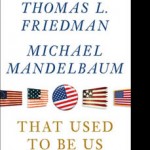 In the spirit of transparency, let me tell you that I believe that capitalism’s impact on America has been mostly positive however I’m not a proponent of the selfish capitalism endorsed by Ayn Rand and her acolytes. It seems to me that we need to grow into an era of “Conscientious Capitalism” which encourages and rewards individual achievement, risk-taking, and entrepreneurial spirit and also embraces the “noblese-oblige” spirit of FDR and Nelson Rockefeller.
In the spirit of transparency, let me tell you that I believe that capitalism’s impact on America has been mostly positive however I’m not a proponent of the selfish capitalism endorsed by Ayn Rand and her acolytes. It seems to me that we need to grow into an era of “Conscientious Capitalism” which encourages and rewards individual achievement, risk-taking, and entrepreneurial spirit and also embraces the “noblese-oblige” spirit of FDR and Nelson Rockefeller.
Personally, I endorse raising the age for Social Security eligibility to 75 (which would negatively effect me), increasing taxes, re-evaluating bureaucracies to eliminate waste, zero-based budgeting to reduce spending, and programs which encourage Baby Boomers to remain economically productive and contributing to the country’s tax coffers rather than retiring and taking Social Security. We’ve got to face the music sometime and there’s no sense in procrastinating.
In his Bloomberg BusinessWeek review of Tom Friedman’s latest book, David Camp takes Friedman and his co-author, Michael Mandelbaum to task for not recommending big, bold solutions to the problems and issues they discuss in the book but I’m not sure that that’s the authors’ job. However, Camp does commend them for doing a solid job of evaluating America’s current situation in the 2nd decade of the 21st century and bringing our challenges to light.
My daughter is a high school senior so we’ve been in college tour mode since July. Something I’ve noticed that’s emphasized at all the colleges we’ve visited is their focus on attracting students from outside of the US. Of course, each college’s freshman class has a finite number of openings and if a higher percentage of those positions are filled by international students the fewer that will be available to American kids. On the one hand, I don’t doubt that part of the schools’ strategies is to address globalization and broaden the scope of their institutions. But I also don’t doubt that part of the plan is to attract international students from wealthy families to make up for American students whose families may no longer to be able to foot the annual bill for these institutions.
Friedman and Mandelbaum make some disturbing points in comparing American students with their Chinese counterparts. They talk about how we in America tend to reward our kids’ efforts whereas in China a student is rewarded only for accomplishment. Chinese students are expected to acquire strong math and science skills. In America, our education system is designed more to push the students through the pipeline than to encourage/demand excellence in specific skill sets when they reach high school graduation time. The Chinese see education as an economic issue. In America, we see it as a social issue. Friedman & Mandelbaum tell a sobering story about a small, obscure liberal arts college in the Midwest whose freshman class has a few hundred openings but which received applications from 900 Chinese students all of whom had perfect SAT math and science scores. Our kids need to be able to compete with these challenges.
The book talks about the types of employees that American businesses are seeking in order to be competitive as we move forward. We need creators and we need servers who add value which is unique and irreplaceable such as abstract analysis skills. The authors note that there are four catagories of workers :
1. Creative Creators
2. Routine Creators
3. Creative (inspired) Servers
4. Routine Servers
The Routine Creators and Routine Servers will be at the most risk of having their positions eliminated.
Just to get interviewed for a job these days, a candidate will need the following abilities: critical thinking skills, the ability to accomplish non-routine tasks, and the ability to work collaboratively. To get hired, a candidate will also need the ability to enhance, refine, and invent along with a proven ability to innovate. (“What was your best innovation during the past year?”, “ What projects are on your drawing board?”). Think Google.
Our schools need to teach and encourage students to visualize, identify, decide and direct within a competitive learning environment. They need to understand how to adapt and to innovate.
The books cites Carlson’s Law: “In a world where so many people now have access to education and cheap tools of innovation, innovation that happens from the bottom up tends to be chaotic but smart. Innovation that happens from the top down tends to be orderly but dumb.” It’s all about collaboration. This sounds like the theory that Gen. David Petraeus employed in Afghanistan.
I love the observation cited in this book by former Michigan governor, Jennifer Granholm that “the electric car will be an iPad on wheels”.
Someone else makes this suggestion. Why not offer companies located anywhere else in the world five years of local, state, and federal tax relief if they open and maintain factories in the US which create jobs for that 5 year period.
It’s no surprise to anyone who reads Friedman’s columns that he’s a strong proponent for America to get past its oil fix. To Tom Friedman, “talent is the new oil”.
The 24 hour news cycle has made it even more attractive for journalists to turn national politics into theater. It’s all become a “who’s up/who’s down” game. Friedman & Mandelbaum talk about the impact of gerrymandering which is a process of dividing up political districts in order to provide political advantage to the party in control of the process. As the authors describe it, gerrymandering essentially assures the party in power that its candidate will win the primary election. Since most states allow only registered Republicans and Democrats to vote in primary elections, those of use who prefer to remain politically independent are excluded. That allows the rabid partisans to control the elections. Given the cost of multi-platform message distribution in the media these days, that leaves the winning candidate no choice but to placate the zealots. (Witness what’s been happening with President Obama and the left-wingers in the Democrats and Mitt Romney with the Republican Tea Partiers). The majority of Americans who want to see our politicians collaborate and compromise are left out of the conversation. Friedman & Mandelbaum favor a Teddy Roosevelt/Ross Perot-type third party candidate who has no hope to win but can influence the Presidential election. It wouldn’t surprise me in the 2012 Presidential election to see Barack Obama, the Republican candidate, and independent party candidates representing zealots on the left and right.
“That Used To Be Us” says that America’s fate in the 21st century depends on how we deal with the following challenges: globalization, the IT revolution, the deficit and energy consumption.
I found Tom Friedman’s last book to be somewhat tedious. This book is disturbing, enlightening, and inspiring.
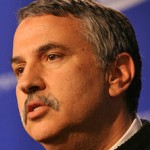
The Social Animal by David Brooks

I expected this book to contain information about various sociological discoveries and David Brooks’ interpretations of what they mean. Instead, Brooks has written an allegory to create a story about his protagonists which represent coalesce and represent various research findings. We learn about factors which influence their development (and our own) from conception, through childhood, young adulthood, middle age, and old age.
For instance, regarding sexual attraction, men tend to prefer women who have a 0.7 waist-to-hip ratio. There’s also equivalent information about qualities which unconsciously attract women to men but I don’t recall off the top of my head what they are. However, I don’t believe it had anything to do with hand and foot size.
Brooks tells us that research shows infants at a very early stage of development can “taste” sweetness in the foods that their pregnant mothers are ingesting which can influence the child’s appetites after birth. There also appears to be some credence that an infant in the womb responds to music which its mother is listening to.
The research does appear to show that we are responding emotionally even when we believe that our responses are based on rational thought.
For instance, the qualities which appear to be most important in predicting our ability to achieve and succeed have to do with our ability to detect patterns, to be attuned to others so that we can learn from them, the ability to be taught, our ability to be open-minded, and our ability to objectively weigh the strengths of our beliefs against the strengths of the actual evidence for or against those beliefs.
During an episode described in The Social Animal, one of the characters experiences a sense of personal fulfillment. Brooks explains that research has discovered that when our personal vision of the world is fulfilled, we experience a surge of pleasure from the release of chemicals in our brains.
He told a story to Charlie Rose during an interview about how Mark Zuckerberg’s biggest complaint about, “The Social Network” was that the movie didn’t do a good job of conveying the sheer passion and joy experienced by a programmer who gets the code right. That observation seemed to reinfornce Joseph Campbell’s advice to “Follow your bliss”.
If you’re interested in how evolution has affected our reactions to our physical environment, how our emotions are created, how ethnic cultures impact our responses to stimuli, and how the aging process affects our physical and emotional development, you should find a lot of food for thought in this book.
I listened to the 16 hour audio book with my teenaged daughter as we drove around the Northeast visiting various schools on her pre-senior year summer college tour. She found it interesting, as well. I would have preferred that the audio version was read by David Brooks but Arthur Morey does a good job and I think you’ll enjoy it.

Here’s David Brooks’ TED Talk about The Social Animal
http://youtu.be/rGfhahVBIQw
MTV’s 30th Anniversary
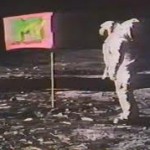
August 1st, 1981 was a day which ushered in a transformation not only for a music industry suffering from the “Disco Sucks” backlash but also for television.
MTV: Music Television was the first TV channel created specifically for a lifestyle.
The radio industry had been forced into creating niche boutique formats targeted at specific psychographic audiences by the growth of FM as a viable broadcast distribution channel. The number of listener choices on the radio dial were significantly increased.
Meanwhile, the television landscape of 1981 resembled that of radio in the 1950s and 60s. CBS, ABC and NBC dominated and under their big tents were a variety of program types appealing to a broad spectrum of lifestyles and age groups ranging from the cradle to the grave.
Cable TV distribution was still in its infancy. HBO became the first viable cable channel as a destination for uncensored movies. However, there wasn’t much else driving significant audiences to cable TV from the broadcast networks.
In the late 70s/early 80s, American Express created a marketing plan for its Gold Card which was targeted at the affluent Baby Boom generation. Part of that plan was the company’s partnership with Warner Communications to create WarnerAmex and their brainchild was a shopping network named QUBE. The concept was simple: viewers would see products showcased on QUBE and use their AMEX Gold Card to buy them.
But before they could launch QUBE, WarnerAmex needed to encourage more Americans to sign up for cable TV. In the early 1980s, the cable industry was dominated by small, local companies rather than multi-system operators (MSOs). It wasn’t unusual for the cable operation to be running out of a local mom & pop hardware store. The industry may have been able to lay cable throughout their communities, accounting for “homes passed” but not many of those homes were actual cable subscribers.
To encourage Americans to become basic cable subs, WarnerAmex created three networks: The Movie Channel to compete with HBO, Nickeldeon to attract the Sesame Street crowd, and MTV: Music Television. Expectations for these channels weren’t all that high. Essentially, they were dog & pony shows offered free to encourage increased use of cable TV and to set up the introduction of the big money machine, QUBE.
Unfortunately for WarnerAmex, the company spent too much time tweaking and researching their product. So, in 1985 , the Home Shopping Network launched and QUBE went into the history books as the cable TV industry’s version of the Edsel.
However, MTV: Music Television began to catch on at least in the markets which could get it. Viewers in places like Albany (NY) and Peoria (IL) were mesmerized by the new video music channel. Parents and their teenagers gathered around the tube and discussed the videos. It was, to quote the sagacious Sly Stone, “a family affair”.
Oddly, music industry executives in New York and LA weren’t all that interested. They’d heard about this new fledgling cable channel but they couldn’t see it. MTV wasn’t available on the cable systems serving New York City and LA. So, for its first two years of operation, MTV was pretty much off their radar screen.
The Michael Jackson phenomenon changed all that as did the introduction of MTV onto the New York and LA cable systems late in 1983 which resulted in network TV and national magazine coverage. The channel’s brand continued to grow throughout the 80s and 90s. The sales department won more arguments about the ratings value of long-form programming versus short-form music videos. “Real World”, “Beavis & Butthead”, and other long-form show continued to encroach on the channel’s schedule real estate making less time available for music videos until MTV could no longer refer to itself as “Music Television”, at least not without its tongue in its cheek, and the channel evolved into what it is today.
MTV’’s approach to targeting a specific lifestyle group was similar to what the social media world today refers to as “communities of like-minded end users”. MTV’s Bob Pittman used to say that the channel was about “fashion”. And, whether it’s fashion in the sense of clothing styles, in the sense of an individual’s overall tastes and preferences, or in the sense of a collective group’s tastes and preferences, MTV opened the door and led the way for successors like BET, E!, Bravo, Lifestyle, CMT, The Comedy Network and OWN. Meanwhile, the audience segmentation and changes in expectations created by these highly targeted networks have had their impact on the decline of broadcast network TV viewership.
As I mentioned earlier, during MTV’s first two years on air it was unavailable in Manhattan where our offices were located. So that we could monitor the channel, video airchecks were messengered in from the Long Island uplink on a daily basis. Sometime during this period, news came out that many of the classic episodes of “The Ed Sullivan Show” and Johnny Carson’s “Tonight Show” had been destroyed because the networks were reusing the old tapes on which they’d been recorded. Amazingly, no one thought it was important to preserve these shows for history.
I had a stack of MTV airchecks in my office and sensing that these might be of some historic value I contacted New York’s Museum of Broadcasting to see if they’d be interested in the tapes for their archives. The museum official with whom I spoke informed me that, no, they would not be interested in having those airchecks for their collection because MTV was (and I think I actually heard him sniff as his nose went up in the air) “cable…not TV.”
MTV was destined to transform the television and music industries but to the short-sighted it was irrelevant because the channel didn’t fit into their preconceived notions. There’s a lesson in that story.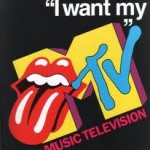
The Russian, Marshall McLuhan, & Me
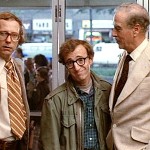
Russian journalist, Vladimir Abarinov reports for Radio Liberty, aka svobodanews.ru from his base in Saratoga Springs, New York. Our daughters attended the same school this year which is how Vladimir and I became acquainted.
Apparently, communications theorist Marshall McLuhan, the man who’s most famous observation is “The medium is the message”, is quite revered in Russia. Earlier this month, to mark the centennial of McLuhan’s birth, Abarinov asked if he might interview me about broadcasting and social media in America. What follows is the Google English’s translation of a portion of that interview from the original Russian transcript. Idiomatically, it’s a bit challenging, but….
Brindle: I truly admire the social networks and new opportunities arising with the advent of Internet radio and podcasts, which are now You can listen to the car dashboard. For me it is, in essence, a continuation and extension of what I have done before, but there is also a challenge. If you do business information, you can no longer be only newspaper people. or just a radio journalist, broadcaster or just. You should work on all platforms, in all guises at once incorporated into a product of sound, video and text. In addition, the audience is now more control over the content, it has become more active and more demanding. Those who are accustomed to the traditional one-way communication with the public, it is very difficult to restructure in this regard.
Abarinov Vladimir: We met with Ron because our daughter Mary and Sarah attend the same private boarding school for girls. Once we returned from school, and Ron complained to me that Sarah has blocked his access to his Facebook page”.” I replied that I have not blocked, but sometimes I can hardly understand what is written there. Our daughter while sitting in the back, listened and laughed. Is technology taken away from us our children?
Brindle: I do not think. Kids always find a way to stand apart from their parents. It is growing, and they want better relations with peers than with mom and dad. So they put us to the barriers. When I was in the same age as I did the same thing, just different. I do not think that technology hinder our communication with children, to me they, conversely, help. I will find something of interest in the network, showing her daughter with her and we discuss this information. It is useless to resist – you need to use technology as an opportunity for contact with children. But I recognize that they must also assert their independence. And then there is the risk that the information they publish to social networks, gain access someone else, so they limit their social circle friends whom they trust. Remember Congressman Wiener, who sent a””Twitter their intimate pictures. Now to leak so easily …
You can read the a transcript of the entire article here
http://www.svobodanews.ru/content/transcript/24269535.html
Conversations I’d Prefer To Avoid Over Breakfast


On weekday mornings during the school year, my teenage daughter and I are in the car between 6:30-7AM when I drive her to meet her school’s shuttle bus. While she’s struggling to gain consciousness, we’ll usually punch back and forth between the two CHR (aka “Top 40”) stations in the market. The morning team on one of those stations is locally based while the morning show on the other is The Elvis Duran Show which is syndicated by Clear Channel out of New York City.
One recent morning at about 6:45, my daughter had punched out of the commercial break airing on the local show over to Duran’s show where Elvis and his crew were interviewing Doctor Oz. I’m not familiar with Doctor Oz but gather that he’s buddies with Oprah,has both TV and radio shows,and apparently has a strong following.
In any case, the next thing I heard coming through the car’s radio speakers at 6:45AM was Doctor Oz explaining to Elvis Duran how Chlamydia and other STDs can be transmitted by oral sex.
Elvis and his colleagues then proceeded to share their opinions and experiences with sexual encounters of the oral variety but my finger had already pushed the button. Really. Not a conversation on which I’m interested in eavesdropping with my 16 year old daughter at any time of the day and especially not during breakfast time.
Look, I understand that our kids are exposed to sex education in elementary school and that they’re probably a lot more sophisticated in their knowledge of human sexuality than we were at their age just as we were more sophisticated than our parents when we were in our teens. Nevertheless, I have noticed a disconcerting trend on the morning drive shows of allegedly family-friendly radio stations to use language and venture into topical territory which seems inappropriate for the early adolescent and prepubescent crowd.
The term “ass” as in I’m going to kick yours is a common term heard during these shows. I’m not sure why. Is it to make the talent sound more authentic, real, or “street”? I suspect that most parents who might use that term in conversation with their friends and colleagues would feel uncomfortable using it in front of their young kids.
Other terms that I’ve heard pop up during conversation on radio morning drive shows include: penis, vagina, camel toe, and BJ. Although these terms obviously provide some “titter” entertainment value for immature audiences (Excuse the pun but I couldn’t resist), I’m not sure that their use helps the radio station in its quest to attract and maintain listenership among the 25-49 year old female cohort that advertisers covet.
As a radio programmer, I’ve certainly had to deal with my share of calls from parents who were offended by a song lyric or something a DJ said while they were listening to my station in the presence of their young children even though it’s doubtful that those children a) noticed the transgression or b)comprehended its meaning. The most important issue was that the adult felt uncomfortable with these words or topics while the children were present. This was true even if the parent would feel comfortable using this language or discussing these topics when the kids aren’t around.
I also recall seeing some research stating that even young adult females who aren’t mothers feel uncomfortable hearing inappropriate language and/or topics discussed when children are present.
Oral sex with your Cheerios? [ Insert your own punchline here].

